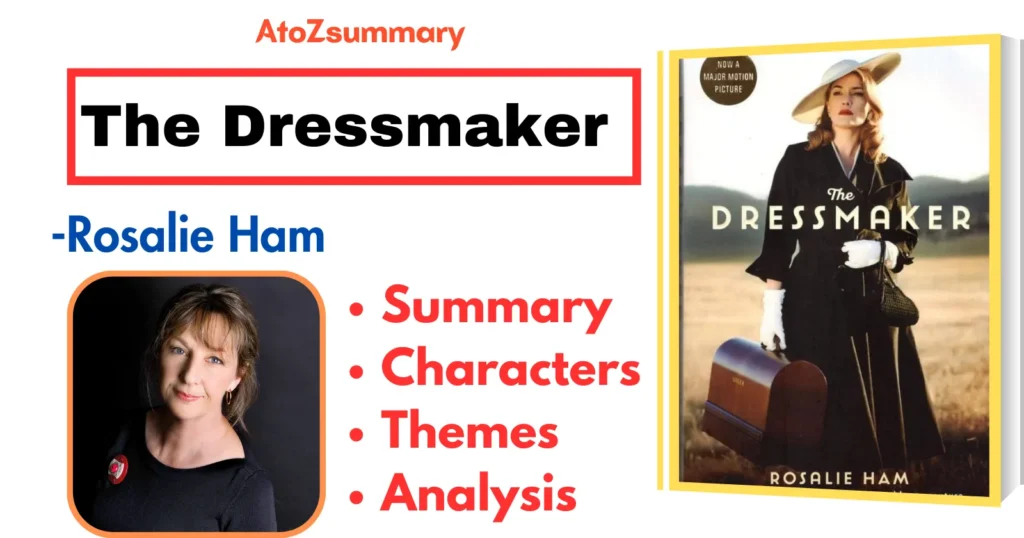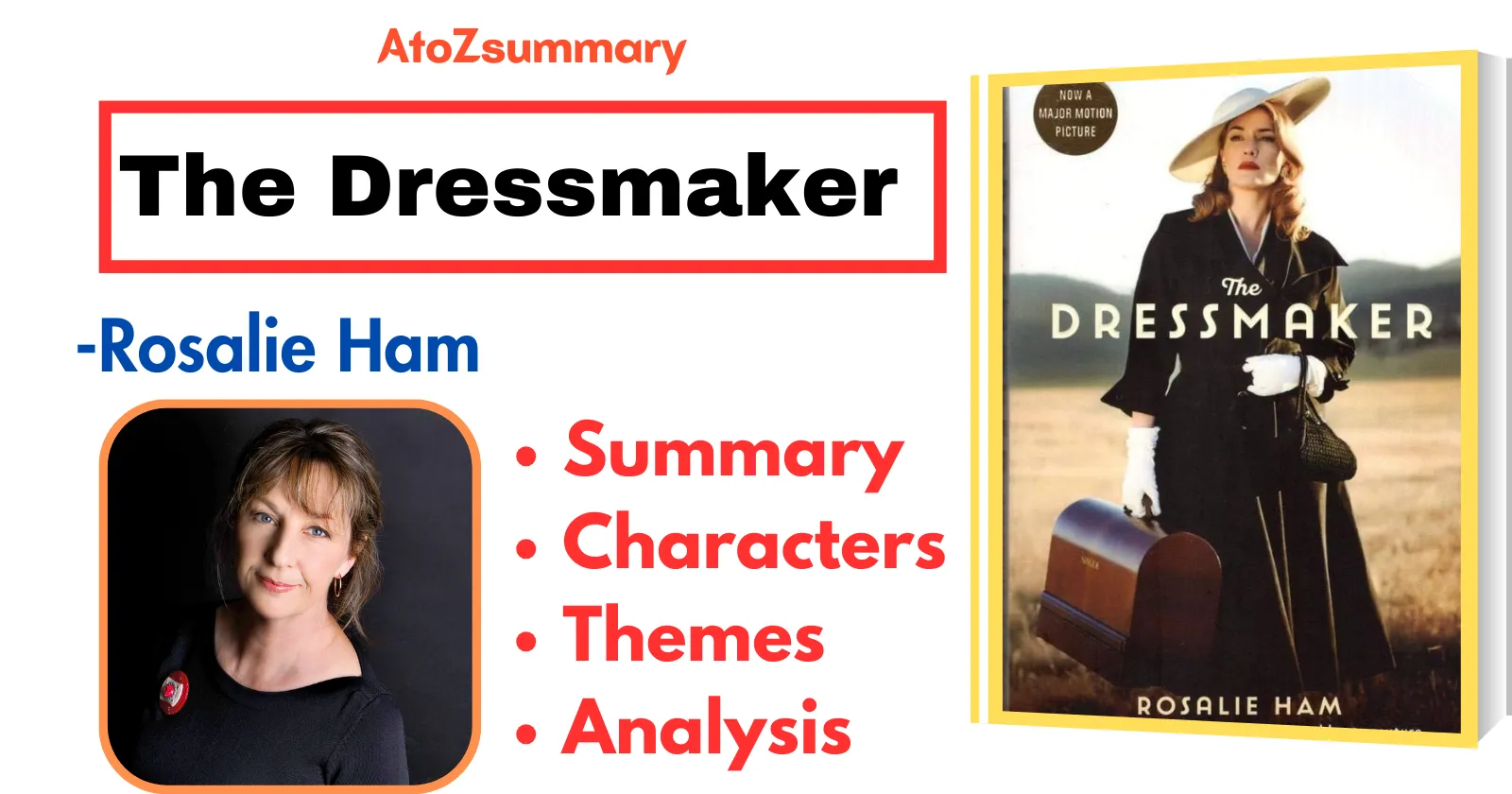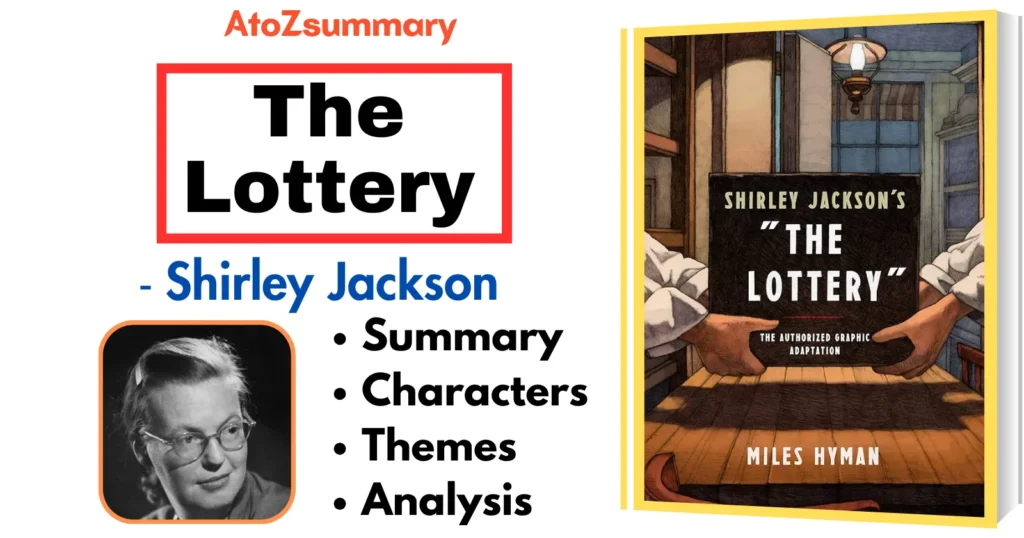
About the Book: The Dressmaker
| Title | The Dressmaker |
| Author | Rosalie Ham |
| Genre | Gothic novel, Historical fiction, Romance novel |
| First published | January 1, 2000 |
| Publisher | Duffy & Snellgrove |
| ISBN | 9780712666358 |
| Setting | A 1950s fictional Australian country town called Dungatar |
| Protagonist | Tilly Dunnage, a dressmaker who returns to her hometown after 20 years of exile |
| Antagonist | The townspeople of Dungatar, who are responsible for her exile |
| Awards | shortlisted for the Miles Franklin Award in 2001 |
| Film adaptation | A film adaptation of the book was released in 2015, starring Kate Winslet as Tilly Dunnage |
Analysis: The Dressmaker
The Dressmaker is a novel by British author Beryl Bainbridge, written in 1973. This narrative, which takes place in 1944 after the catastrophic WWII bombings of England, tells the tale of a tiny working-class family and their destructive circle of mutual sabotage. Rita, who is seventeen years old, is under the care of her aunts, Nellie and Marge. Nellie is a study of opposites; at fifty, her younger sister experiences restrained sensuality and yearns for love, while Nellie is starchy and too prim. Rita finds herself in the midst. It’s “a novel in which ignorance, repression, and narrow-mindedness can lead only to tragedy,” as Mavis Cheek puts it in The Guardian.
Characters: The Dressmaker
The characters of “The Dressmaker” by Rosalie Ham are:
- Tilly Dunnage: The protagonist, a skilled dressmaker returning to her hometown to uncover the truth about her past.
- Molly Dunnage: Tilly’s eccentric and mentally challenged mother, who is an important part of the story.
- Teddy McSwiney: A childhood friend of Tilly, who develops a romantic interest in her.
- Sergeant Farrat: The local police officer who becomes involved in the unfolding events in the town.
- Gertrude Pratt: A wealthy and influential woman in the town, with a complex relationship with Tilly.
- Beulah Harridiene: Another influential woman in the town, known for her arrogance and snobbishness.
- Elsbeth Beaumont: Tilly’s childhood friend, who plays a role in the town’s gossip and drama.
- William Beaumont: The son of Elsbeth Beaumont, William Beaumont is a handsome and charming young man who is attracted to Tilly.
- Evan Pettyman: The town’s most powerful man, Evan Pettyman is responsible for Tilly’s exile.
Themes: The Dressmaker
The themes of “The Dressmaker” by Rosalie Ham are:
- Revenge: The main character seeks revenge on those who wronged her in the past.
- Small-Town Prejudice: The novel delves into the narrow-mindedness and judgment that can prevail in a small town.
- Fashion and Identity: The protagonist’s skill in dressmaking becomes a tool for self-expression and transformation.
- Secrets and Betrayal: The story uncovers hidden secrets and explores the impact of betrayal on relationships.
- Social Hierarchies: The book examines the class divisions and social hierarchies present in a tight-knit community.
- Isolation: The theme of isolation is prevalent, with characters facing loneliness and exclusion in various ways.
Watch Full Video Summary of “The Dressmaker”
The Dressmaker Summary
The novel has a circular framework. The lines “Afterwards she went through into the little entrance room, the tape measure still dangling about her neck & allowed herself a glass of port” open the scene following the disastrous event. The two ladies are so shaken by what transpires—which is surprising in this orderly and regimented home—that they retire to bed without drinking tea. The story advances until the night of the disaster in the following chapter, which then goes back four months.
Rita’s father moved into an apartment above his butcher shop and gave custody of her to his single sisters when Rita’s mother passed away during childbirth. Since they all reside in Liverpool, he frequently spends his weekends with her. Rita knows that he is her father, yet she still refers to him as “Uncle Jack.” Jack is a helpless, submissive person who always submits to the authority of his controlling, older sister, Nellie.
The titular seamstress, Nellie, expresses the contradictory facets of her personality via her craft. The sense of security that comes from knowing that she is skillful and knowledgeable about her materials is what drives her to master her Singer sewing machine and satisfy her desire for control. Rita was molded by Nellie in the same way as she had her raw material when she arrived under her care. Rita is “Nellie’s creation,” Jack concludes, thinking back to his daughter, who is seventeen years old. The dressmaker stitched it straight as a die, as if she had cut out a design and pinned it precisely to ensure that there was no possibility of a seam gap.
When Nellie pulls out her dressmaker’s dummy, she allows her repressed desires to come to the surface while she tames any inappropriate feelings Rita may have. “Coquettishly, holding it in her arms like a dancing partner, […] stroking the material down over the stuffed breast,” is how she treats the dummy, which she treats with such affection.
The second somewhat unfathomable obsession of Nellie’s is protecting her mother’s furnishings. Her frustration with rationing and shortages during the war is openly admitted to the church minister, while it was “difficult” for her to acknowledge her “slavery to mahogany and rosewood.” Nellie now spends her time polishing and cleaning her furniture because she is devoted to her mother, whom she cared for in her final days. Every morning when she wakes up, she worries that the sun, the rain, or any number of other opportunistic enemies may harm the pieces. Nellie worries that Marge won’t take care of her mother’s artifacts once she passes away, despite her diligent preservation of them.
While Nellie saw herself as the defender of the Victorian order, her sister saw herself as a “casualty” of it. Marge is a flamboyant dresser, a smoker, and a naturally seductive woman who longs for a guy of her own. She had one marriage. Following his return from the war, her spouse passed away from influenza. Following their brief union, Nellie decided to change Marge’s carefree and lax attitude. She turned away every suitor Marge had after that, calling them unworthy, and Marge reluctantly accepted her elder sister’s control. As a middle-aged factory worker, Marge alternates between hope that love is still possible and sorrow that Nellie has ruined her prospects.
Following years of sharing a small, depressing row house and ruining one other’s already meager happiness, Nellie and Marge have become used to arguing all the time. Nellie chastises Marge for her foul language throughout dinner, to which Marge responds with yet another lewd comment. During a vehicle ride, the arguments continue with Jack, who “had heard it all before, not the same subject but the bitterness lying beneath the words.”
Rita, on the other hand, is just plain awkward. She is prim and respectable, just like Nellie, but she also has a tender side that is heavily influenced by American romantic films, just like Marge. Rita is jealous of her friend Valerie Manders’ “glossiness” since she is aware that she is not the right material for a love heroine and that Valerie is made of a completely different material. Rita is nothing like Valerie—beautiful, rich, and engaged to a handsome American soldier.
Valerie invites the US soldiers stationed nearby to her celebration. Rita meets one of the troops there named Ira. Rita finds him to be ignorant, callous, and dull-witted, but she describes him as “like a movie star.” Ira is not excited about their covert meeting, but they start dating when she casts all of her love delusions onto him.
Nellies extends an invitation to Ira for tea after discovering Rita’s covert affair. Nobody is impressed by his dull conversational abilities, and when Ira expresses genuine interest in Marge, everyone becomes even more uncomfortable. Rita urges Ira to take her out again soon, unfazed by the catastrophic encounter, but he gives her a noncommittal response.
One day after work, Marge stays home to try out for the Christmas production of the Dramatics Society. She’s at home alone, so she’s shocked when Ira shows up at the door. Rita is too stiff, he argues, and “she doesn’t want no dancing nor drinking.” Ira is “no good” for Rita, yet knowing “what sort of man” he is, Rita chooses to give in to her desires for him.
When Nellie gets home after Valerie’s wedding dress fitting, she’s astonished to see Ira zipping up his pants in the front room. She becomes enraged and stabs him with her scissors as he grabs the sacred furnishings with a surprised action. Nellie calmly takes control of the issue when her enthusiasm has faded. With Marge’s assistance, she sews a sack and stuffs Ira’s corpse inside. She then gives Jack the assignment to throw the bag into the river. Rita spends the next few days in agony, thinking she has been betrayed, not knowing that Ira has passed away.
In the ending of “The Dressmaker” by Rosalie Ham, Tilly Dunnage, the protagonist, discovers the truth about her past and the tragic events that shaped her life. She confronts the harsh realities of the small town’s prejudices and faces the consequences of her actions. The conclusion brings a mix of resolution and tragedy, highlighting the complexities of human relationships and the impact of revenge. Without revealing too much, it’s a poignant ending that leaves readers with a sense of reflection on justice and the cost of holding onto the past.
FAQs
What is The Dressmaker about?
The Dressmaker is a story about a woman who returns to her hometown to seek revenge on those who wronged her, but finds love and redemption instead.
What is the main message of The Dressmaker?
The Dressmaker conveys that seeking revenge can bring unwanted consequences, while forgiveness and redemption offer a path to healing.
What is the trauma in the dressmaker?
The trauma in “The Dressmaker” is the wrongful accusation and exile of Tilly Dunnage, a young girl who is blamed for a crime she did not commit.
What is the irony in the dressmaker?
The irony in the dressmaker is that the townspeople who ostracized Tilly for being an outsider are the same ones who are most transformed by her presence.
Why does Tilly feel guilty in the dressmaker?
Tilly feels guilty because she believes she is responsible for the death of Stewart Pettyman.
What did Evan Pettyman do to Molly?
Evan Pettyman seduced Molly, got her pregnant, refused to marry her, and ostracized her from the town.
Why does Tilly stay in Dungatar after Teddy’s death?
Tilly stays in Dungatar after Teddy’s death to seek revenge and bring justice for her loved ones.
What happens to Gertrude by the end of The Dressmaker?
Gertrude finds love and happiness with William Beaumont, leaving behind her old life of loneliness and despair.






![Juliet Takes a Breath Summary, Themes, Synopsis & Characters [Novel by Gabby Rivera] Juliet Takes a Breath Summary, Themes, Synopsis & Characters [Novel by Gabby Rivera]](https://atozsummary.com/wp-content/uploads/2023/05/Juliet-Takes-a-Breath-Summary-Themes-Synopsis-Characters-Novel-by-Gabby-Rivera.webp)
![Regretting You Summary, Themes, Synopsis & Characters [Book by Colleen Hoover] Regretting You Summary, Themes, Synopsis & Characters [Book by Colleen Hoover]](https://atozsummary.com/wp-content/uploads/2023/05/Regretting-You-Summary-Themes-Synopsis-Characters-Book-by-Colleen-Hoover-1024x576.webp)



